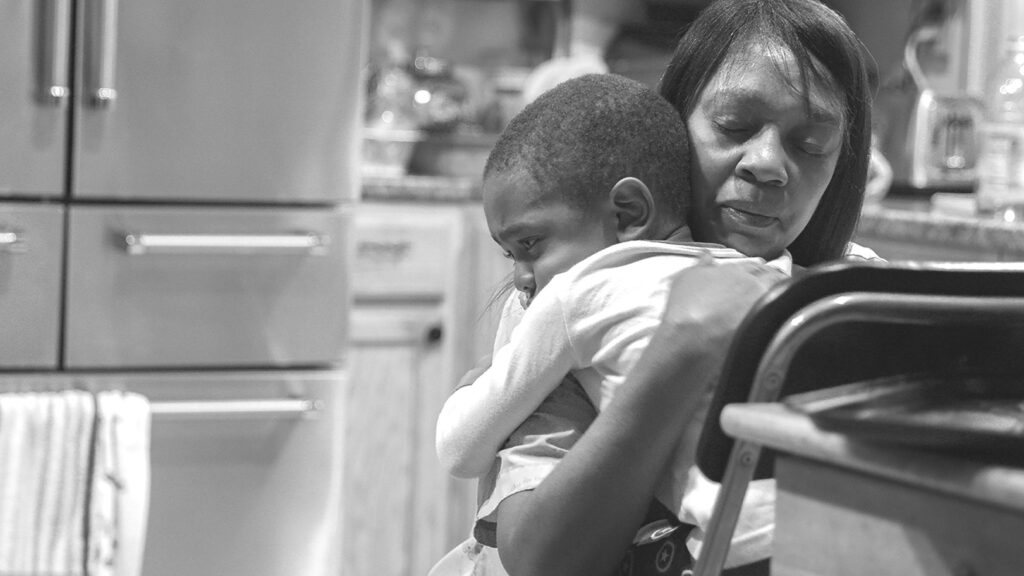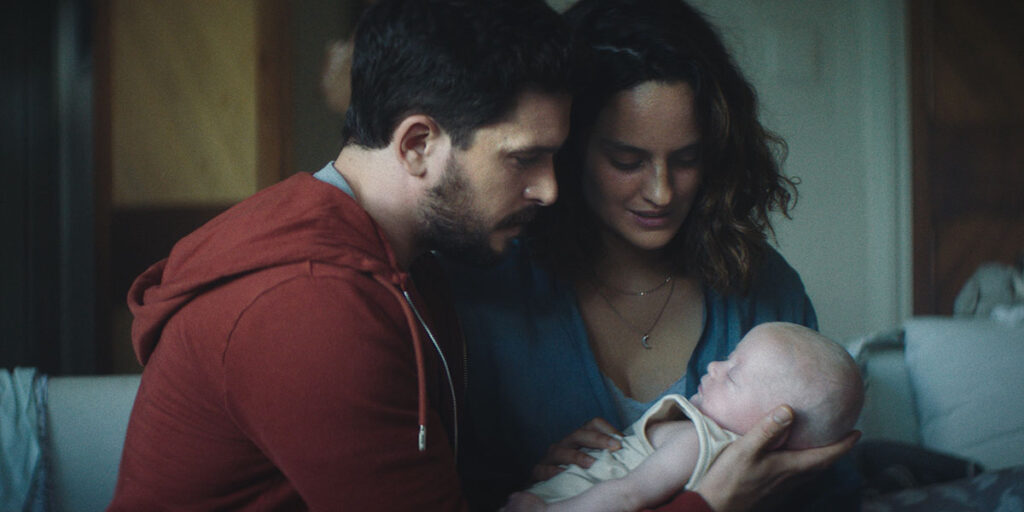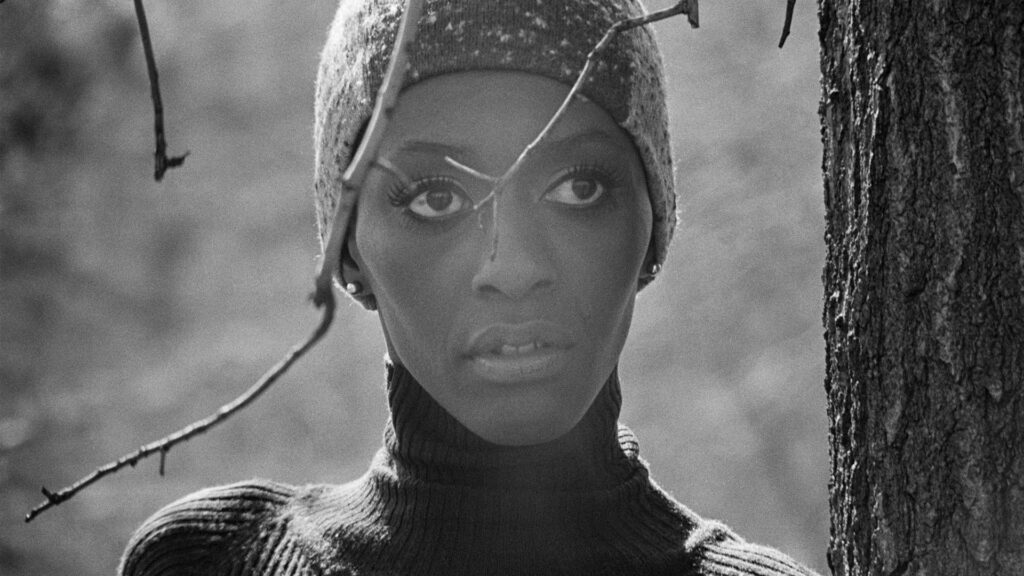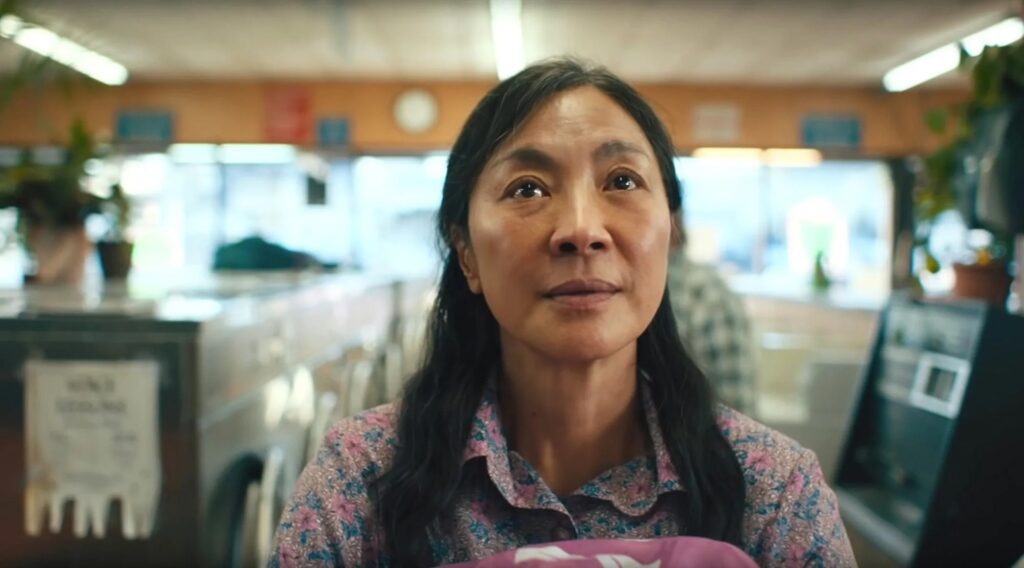The following is adapted from “Mothers of Invention: Film, Media, and Caregiving Labor,” edited by So Mayer and Corinn Columpar and set to be published April 5. Copyright (c) 2022 Wayne State University Press. Reprinted with the permission of the publisher.
From Crisis to Critique
In 2019 Jennifer Lee, co-director of Frozen (2013) and Frozen 2 (2019) as well as chief creative officer of Walt Disney Animation Studios, discussed her status as a working mother during a Q&A at the London premiere of Frozen 2. After her directing partner, Chris Buck, praised her impressive “juggling” skills, she noted, “That’s what mothers do,” and then thanked her daughter for “teaching her how to handle multiple things at once.”1 With this comment, Lee joined a small chorus of women in the film and television industries, including Jocelyn Moorhouse, Marielle Heller, and Greta Gerwig, who have recently talked about their status as working mothers, thus drawing attention to the challenges that bely the liberal feminist aspiration of “having it all.” At the same time, Lee’s comment also normalizes those challenges and, moreover, invokes a model of “Lean In” motherhood, in which parenting is valuable primarily for the workplace skills it confers, thereby suggesting that even if the taboo on being simultaneously a primary caregiver and A-list filmmaker has been broken, capitalist and patriarchal assumptions about the relative value of those two forms of labor remain.2 The net effect is a sense of Lee as, paradoxically, both an ordinary mother and an exceptional woman who has managed to achieve tremendous power and prominence in an industry that is not cut to the measure of her desire—or her needs.
As important as individual testimonies and isolated success stories are for making visible the experience of women, or any caregivers, who are regularly working “second shifts,” it is a handful of grassroots organizations that are collating the experiences of caregivers in the film and media industries—those in both above- and below-the-line positions—in order to analyze and attempt to redress the structural and systemic inequalities that determine those experiences. The most well-established and active of those organizations is Raising Films, founded in the United Kingdom in 2015 by five film industry workers, four mothers and one non-parent, which has subsequently formed branches in Australia and Ireland. (Branches in Canada and New Zealand are currently under consideration.) Drawing on the community knowledge and needs of parents and carers both in, and excluded from, the screen sector, Raising Films campaigns to change working practices across that field. This work has multiple implications for film and media scholars as well as practitioners: not only does the data produced by Raising Films include scholars as both researchers and subjects facing similar pressures and exclusions, it also highlights what film and media studies has to gain from attending to labor practices in production and exhibition. Indeed, it amplifies something that the reportage around Harvey Weinstein’s criminal abuse of women workers has shown: researching and bearing witness to the unequal conditions in which mainstream film and television are made, exhibited, and distributed must inform our work as feminist scholars. In light of this imperative, Raising Films plays a significant role in this volume. One co-editor (So) is a co-founder of the organization, and the first two essays in the volume discuss its research findings and ongoing work, thereby setting the stage for a volume that foregrounds the relationship between parenting and participation in film and media culture, be it through the lens of industry analysis, ethnographic research, production histories, and/ or personal reflection.
Insofar as Mothers of Invention pursues this line of discussion, it does so in order to inform and form relations with issues that are far more central to existing work on motherhood in film and media studies: namely, representation and spectatorship. In other words, Raising Films’ advocacy work matters because it connects to and contextualizes the important foundations laid by key scholars in the field. The most notable of those are E. Ann Kaplan, who published Motherhood and Representation: The Mother in Popular Culture and Melodrama in 1992, and Lucy Fischer, whose Cinematernity: Film, Motherhood, Genre appeared four years later.3 Both analyzed popular cinema in order to discuss, as Fischer puts it, “the mother’s status as a figure” in various kinds of film and media.4 While one could imagine this pair of texts laying the foundation for a veritable subfield in film and media studies, the lines of inquiry they initiated have instead been taken up in fits and starts and within the context of other subfields. One such subfield is the study of certain genre traditions, especially melodrama, science fiction, and horror, to which psychoanalytically inclined scholars such as Christine Gledhill, Mary Ann Doane, Constance Penley, Barbara Creed and, most recently, Sarah Arnold have contributed.5 Another is the study of certain national cinemas, including those of Poland, Mexico, Italy, and the United States, where the figure of the mother is read as and/or against the nation-state.6
The work invoked above is instructive in the way it recognizes motherhood and its representation as historically and socially contingent within generic or national frameworks. Mothers of Invention is similarly concerned with motherhood, and caregiving more broadly, as a variegated practice—one that, moreover, takes shape within the politics of class, race, and sexuality that perpetuate social asymmetries. As a result, it takes on the topic of parenting in a broad range of film and media texts with global reach. Yet despite this diversity, the volume is nonetheless an incomplete representation of the inequalities attendant on caregiving labor and its devaluation. Aware of this, we intend this selective collection to be the entrance to a larger conversation about caregiving labor in audiovisual media and its scholarship that takes into account questions that it begs but does not necessarily answer—questions related, for example, to certain types of caregiving, such as disabled, elder, and foster care; to certain radical parenting theories and practices, including some that have long emerged from communities of color; or to the whole industry of professional caregiving and it attendant politics of race, class, and gender. Moreover, we intend to help frame that larger conversation in a manner that recognizes how very political the intersection between media and parenting can be, something that Hepi Mita captures in such resonant terms when describing the work of his mother, Māori filmmaker Merata Mita. In the concluding voice-over of his documentary Merata: How Mum Decolonised the Screen (2018), he states unequivocally, “Only a mother could have done the things she did. . . . It wasn’t money or power or war that decolonised the screen. It was a mother’s love.”
Technologies and Transformations
Following the lead of Lisa Baraitser, a key scholar of mothering and/as creative labor, Mothers of Invention employs a capacious understanding of the term mother: “anyone who both identifies as female and performs primary maternal work, with a ‘child’ being understood as the other whom such a ‘mother’ elects, names and claims as her child.”7 As a result, the collection takes into consideration a wide array of mothers and parents—biological and adopted, cisgendered and trans, literal and symbolic—in pointed refusal of an essentialist understanding of motherhood or the conservative politics that such an understanding often undergirds. This breadth is a direct result of the many nationalities, racializations, classes, sexualities, and gender identities of not only the volume’s subjects but also its contributors, who hail from multiple continents, have varying levels of seniority, and occupy different positions within the academy and/or the creative industries.
With so many writers coming to the topic of caregiving in the context of film and media studies, each from their own intellectual and professional vantage, each with their own sense of personal and political stakes, Mothers of Invention frames its object of study in a manner that is dynamic, engaging, and relevant to a wide array of audiences—not just to those readers who readily identify as mothers. In Revolutionary Mothering: Love on the Front Lines, Alexis Pauline Gumbs asks: “What would it mean for us to take the word ‘mother’ . . . as a possible action, a technology of transformation?”8 Our contributors highlight the necessary ways in which mothering, as radical caring labor, can actualize what is often obscured or suppressed: the transformative potential of audiovisual technologies.
The first section of the volume, titled “Working Parents,” examines the work lives of parents in the film and media industries, paying particular attention to the systemic inequalities that working mothers face by virtue of their dual status as caretakers and women. Both the Raising Films Research Collective’s and Susan Berridge’s essays use as a jumping-off point Making It Possible, a report published in 2016 by Raising Films that examines labor conditions for parents and caregivers in the UK film and television industries. In “Messy Play: Privileging Anec-Data and Messy Research Practice to Understand Creative Working Lives,” the collective analyzes the impetus and process for grassroots campaigners undertaking qualitative and quantitative research around caregiving workers in the screen sector, framed through the shared “messiness” of feminist scholarship and lived experience. The chapter unpacks Raising Films’ participatory research strategies and excerpts Making It Possible’s key points alongside those of Raising Our Game (2017), a review of employment practices and legislation in the UK context, and We Need to Talk about Caring (2019), the first-ever report on carers in the UK screen sector. Berridge, in turn, fleshes out the specific challenges that working parents in the UK creative industries face, especially in relation to work/life balance, in “Managing Feelings: Raising Films’ Testimonials and the Impact of Caring Responsibilities on the Emotional Well-being of Mothers Who Work in the UK Film and Television Sector.” Analyzing the testimonials collected in and around the Raising Films reports, Berridge contrasts them with institutional, often statistically based, discourses that omit the affective aspects of caring labor in order to identify why and how those absences matter.
Recentering the affective within film culture via mothering, the second pair of essays in this section feature filmmakers and film and media scholars reflecting on the ways their parenting activities and their vocations influence each other. In the co-authored dialogue “How to Do Everything: A Conversation between Filmmakers,” Kristy Guevara-Flanagan and Irene Lusztig, two American mother-filmmaker-scholars discuss the ways the role of parent that they both occupy shapes their respective creative practices, from the production of their documentary work to the circumstances of its distribution and exhibition. Highlighting the centrality of improvisation, in the dual sense of expedience and camaraderie, they demonstrate how the practical and theoretical requirements of parenting on the one hand and feminist film production on the other necessarily inform each other as both ethics and aesthetics. In “Watching while a Mother: Parenting, Spectatorship, Criticism,” Claire Perkins uses—and fuses—critical parenting studies, queer theory, and film theory to frame her ethnographic research with film and media scholars and to reflect on the ways parenting affects one’s identity as a viewing subject and one’s output as a professional critic. Among the topics that she and her subjects discuss are the cascading effects of lived experiences and daily exigencies on one’s cultural tastes, spectatorial position, affective engagement, communal affiliations, and scholarly endeavors.
Picking up where Perkins’s work leaves off, the volume’s second section, “Aesthetics of Maternity,” begins with an essay that makes clear that parenting can radically change the way one sees: in “Visualizing with New Comprehension: Mothering and Autoethnography,” Rashna Wadia Richards takes as her point of departure Margaret Mead’s proposition that motherhood endows women with the capacity to see “with new comprehension.” Examining the ways that the work of mothering is akin to that of a cultural anthropologist, she proposes an emergent maternal anthropology that includes not only a conventional documentary, The Anthropologist (Seth Kramer, Daniel A. Miller, and Jeremy Newberger, 2015), but also parenting blogs and social media platforms that engage practices of participant observation.
The vantage of the participant observer as well as its capacity to engage the viewer-scholar are also central to the remaining three essays in this section, all of which foreground the highly personal and self-reflexive work of certain international auteures working on the margins of commercial film and media industries. In “‘You Have Absolutely No Control over Your Mind and Body Anymore’: Pregnancy, Autonomy, and Prepartum Anxiety in Alice Lowe’s Prevenge,” Alice Haylett Bryan foregrounds questions of maternal mental health as she entwines a close reading of Lowe’s British horror-comedy from 2016 with an account of her own pregnancy and postpartum anxiety. Her discussion culminates in a considered address of the Kristevan abject as a figure that can be mobilized to explore Prevenge’s representation of an extreme experience of pregnancy-related depression, one that has the potential to refract the experience of filmmaker and viewer alike. In “Pregnant Situations in Agnès Varda’s and Anne Claire Poirier’s Film Creations,” Tessa Ashlin Nunn uses feminist phenomenology and affect theory to discuss the way pregnancy is made palpably material in two Francophone proto-feminist films, Varda’s L’Opéra-Mouffe (1958) and Poirier’s De mère en fille (1968). Insofar as both Varda and Poirier strategically incorporate their own pregnant bodies and experiences into their work, they shed light on the phenomenology of pregnancy and prompt Nunn to theorize links between the acts of creating cinema and creating life, as well as the ways film can engage viewers to think through their own relationship to acts of (re)production. Last, in a discussion that looks across a range of nonstandard reproductive representations, including surrogacy, adoption, phantom pregnancies, and teen pregnancies, Missy Molloy turns her attention to Jane Campion’s recent foray into television in “Fetal Imagery and Alternative Maternities in Jane Campion’s Top of the Lake.” Specifically, she reads the series’ second season, “China Girl” (2017), as a culmination of two of Campion’s career-long foci: masochism and the passionately ambivalent mother-daughter bond as one of its most haunting permutations.
While the first two sections of Mothers of Invention are centrally concerned with literal mothers (factual or fictional) and the material realities of their individual experiences, the last two sections broaden the volume’s discussion of motherhood to encompass the figurative, symbolic, and collective possibilities of motherhood as well. In the third section, “Forms of Collectivity,” these possibilities involve, among other things, the extension of caregiving practices beyond the family unit. For Sara Saljoughi and Corinn Columpar, it is a particular text that charts this course. In “Crow, Child, Stranger: Radical Mothering in Bashu,” Saljoughi examines Bashu, Gharib-e Kuchak / Bashu, the Little Stranger (Bahram Beyzai, 1986), one of the most significant films of the Iran-Iraq war, in order to explore its representation of not only an adoptive mother and son but also a larger community bound by reciprocal and negotiated care. Arguing for a politically potent extension of maternity beyond the dyadic, Saljoughi posits a recuperative scenario that both disentangles caring labor from biological essentialisms and offers a radical form of ethics running counter to capitalist productivity and nationalist/militarist histories. Columpar, in contrast, turns her attention to a televisual text in “Confessions of an Aca-Fan-Mom: Jane the Virgin, Motherhood, and Community.” Therein she discusses Jane the Virgin (2014–19), Jennie Snyder Urman’s American adaptation of a Venezuelan telenovela, in order to posit a conjunction between Henry Jenkins’s notion of the aca-fan (that is, a hybrid of scholar and fan) and the maternal spectator. Paying particular attention to the viewing practices and fan cultures that this transnational televisual text represents and in turn produces, Columpar argues that Jane the Virgin creates a maternal community that is defined by difference and resistance to the isolating logic of neoliberalism, which shapes the lives of so many contemporary mothers.
Collective practices of care are at the center of the remaining essays in this section. Elissa Rashkin’s “Obstetric Violence and the Creative Exploration of Alternatives in Guadalupe Sánchez Sosa’s La primera sonrisa” takes as its focus an approach to maternal care and obstetrics that is rooted in Indigenous culture. In considering both the innovative formal strategies of Sosa’s 2014 documentary about that approach and the film’s distribution in grassroots, health, and educational spaces within its national context of Mexico, Rashkin offers a complete account of the film as extending the affective and effective languages of transnational feminist cinema aesthetically and politically. In “‘We Insist on This Project of Life’: A Conversation with Loira Limbal,” film programmer Maria Cabrera interviews filmmaker and organizer Limbal, whose feature-length documentary Through the Night (2020) focuses on a twenty-four-hour daycare in New Rochelle, New York. Reflecting on the daycare’s, and the film’s, various acts of community building, Cabrera and Limbal take up issues raised by the rise of “extreme daycare”: the lack of structural support for caregiving, particularly among Black, brown, immigrant, and working-class communities in the United States; the transformative possibilities of vulnerability as an aesthetics located in the mutual impact of filmmaking and caregiving on each other; and the challenges for both artists and caregivers in the midst of COVID-19.
Like “Forms of Collectivity,” the volume’s fourth and final section, “Alternate Genealogies,” is also interested in formulating mothering as radical resistance to isolation through the extension of caregiving practices beyond the family unit, but what is of particular interest in this section is the way this creates connections to dislocated pasts and, in turn, affirms the possibility of feminist futures. In “From (An)other Mother: Maternal Genealogies and Experimental Film History,” Elinor Cleghorn situates her personal history as a scholar and mother in relation to her wide array of “symbolic mothers,” in Teresa de Lauretis’s phrase—including feminist filmmakers, critics, theorists, historians, and programmers—in order to propose a maternal genealogy of experimental film culture. With this new way of engendering film history, she makes central the mothers of experimental cinema, their various film practices, and the intergenerational exchange they inspire. In “Mother-Storyteller,” Jules Arita Koostachin suggests that such a historiographical strategy is necessary for a truly intersectional feminism that also decolonizes film histories when she places her work as a MoshKeKo AsKi Cree documentary filmmaker and mother in a historical context peopled by other Indigenous “mother-storytellers.” Koostachin proposes that mother-storytellers—“experts in [their] own lives”—are leading an Indigenous resurgence by addressing intersectional oppression and erasure through an endeavor that shapes both form and function in filmmaking toward a truly transformative technology.
In this section’s third essay, “Becoming A(p)parent: New (and Old) Ways of Making A Deal with the Universe,” So Mayer proposes a parental cinema of radical anti-visibility practices that challenge Euro-Western rationalisms and realisms from within the body via A Deal with the Universe (2018), Jason Barker’s first-person account of trans parenting. Drawing on Eliza Steinbock’s theory of trans cinematic “shimmering images,” Mayer connects the film’s representation of pregnancy to a tradition of queer film and video practice that foregrounds performance, spirituality, and community as a form of giving care and a means of creating alternate family. Finally, rounding out this section, and the volume as a whole, is Kristi McKim’s “On Sharing Films, Learning Care, Keeping Watch, and Finding,” an essay that is equal parts lyrical autobiography and critical meditation on pedagogy. In particular, McKim examines the way that the study of film, in the context of both the university classroom and the familial home, constitutes an exercise in shared care, one that has the capacity to engender a mode of attentive engagement with the world and one another that “moves us through generations and histories.”
Notes
1. BFI, “Frozen 2” Directors Jennifer Lee and Chris Buck/BFI Q&A, YouTube video, November 27, 2019, youtu.be/8_wFFpMTx2o?t=1245.
2. Sheryl Sandberg, Lean In: Women, Work, and the Will to Lead (New York: Knopf, 2013).
3. E. Ann Kaplan, Motherhood and Representation: The Mother in Popular Culture and Melodrama (New York: Routledge, 1992); Lucy Fischer, Cinematernity: Film, Motherhood, Genre (Princeton, NJ: Princeton University Press, 1996).
4. Fischer, Cinematernity, 4.
5. Christine Gledhill, ed., Home Is Where the Heart Is (London: BFI, 1987); Mary Ann Doane, The Desire to Desire: The Woman’s Films of the 1940s (Bloomington: Indiana University Press, 1987); Constance Penley, ed., Close Encounters: Film, Feminism and Science Fiction (Minneapolis: Minnesota University Press, 1991); Barbara Creed, The Monstrous-Feminine: Film, Feminism, Psychoanalysis (London: Routledge, 1993); Sarah Arnold, Maternal Horror Film: Melodrama and Motherhood (London: Palgrave, 2013).
6. Ewa Mazierska and Elzbieta Ostrowska, Women in Polish Cinema (New York: Berghahn, 2006); Isabel Arredondo, Motherhood in Mexican Cinema, 1941–1991: The Transformation of Femininity on Screen (Jefferson NC: McFarland, 2014); Giovanna Faleschini Lerner and Maria Elena D’Amelio, eds., Italian Motherhood on Screen (London: Palgrave, 2017); Heather Addison, Mary-Kate Goodwin-Kelly, and Elaine Roth, eds., Motherhood Misconceived: Representing the Maternal in US Films (New York: State University of New York Press, 2009); Asma Sayed, ed., Screening Motherhood in Contemporary World Cinema (Bradford, ON: Demeter, 2016).
7. Lisa Baraitser, “Mothers Who Make Things Public,” Feminist Review 93 (2009): 10.
8. Alexis Pauline Gumbs, “M/other Ourselves: A Black Queer Feminist Genealogy for Radical Mothering,” in Revolutionary Mothering: Love on the Front Lines, ed. Alexis Pauline Gumbs, China Martens, and Mai’a Williams (Oakland, CA: PM, 2016), 23.
“Mothers of Invention: Film, Media, and Caregiving Labor” can be purchased here.
So Mayer is a writer, bookseller, film curator, and organizer.
Corinn Columpar is associate professor of cinema studies at the University of Toronto.







